-
FACTOR ANALYSIS
-
\r\n\r\n\r\nValue chain Analysis
-
\r\n\r\n\r\nPorter's
-
Five Forces Analysis
-
\r\n\r\n\r\nBargaining Power of Suppliers
-
\r\n\r\n\r\nBargaining
-
Power of Buyers
-
\r\n\r\n\r\nThreat of New Entrants
-
\r\n\r\n\r\nThreat
-
of Substitutes
-
\r\n\r\n\r\nIntensity of Rivalry
-
\r\n\r\n\r\n\r\n\r\nCOVID-19
-
Impact Analysis
-
\r\n\r\n\r\nMarket Impact Analysis
-
\r\n\r\n\r\nRegional
-
Impact
-
\r\n\r\n\r\nOpportunity and Threat Analysis
-
\r\n\r\n\r\n\r\n\r\n\r\n\r\n
-
\r\n
-
\r\n\r\n\r\nCloud
-
Radio Access Network Market, BY Deployment Model (USD Billion)
-
\r\n\r\n\r\nPublic
-
Cloud
-
\r\n\r\n\r\nPrivate Cloud
-
\r\n\r\n\r\nHybrid
-
Cloud
-
\r\n\r\n\r\n\r\n\r\nCloud Radio Access Network
-
Market, BY Components (USD Billion)
-
\r\n\r\n\r\nHardware
-
\r\n\r\n\r\nSoftware
-
\r\n\r\n\r\nServices
-
\r\n\r\n\r\n\r\n\r\nCloud
-
Radio Access Network Market, BY Network Type (USD Billion)
-
\r\n\r\n\r\n4G
-
LTE
-
\r\n\r\n\r\n5G
-
\r\n\r\n\r\nWi-Fi
-
\r\n\r\n\r\n\r\n\r\nCloud
-
Radio Access Network Market, BY End User (USD Billion)
-
\r\n\r\n\r\nTelecommunication
-
Service Providers
-
\r\n\r\n\r\nEnterprises
-
\r\n\r\n\r\nGovernment
-
Organizations
-
\r\n\r\n\r\n\r\n\r\nCloud Radio Access
-
Network Market, BY Regional (USD Billion)
-
\r\n\r\n\r\nNorth
-
America
-
\r\n\r\n\r\nUS
-
\r\n\r\n\r\nCanada
-
\r\n\r\n\r\n\r\n\r\nEurope
-
\r\n\r\n\r\nGermany
-
\r\n\r\n\r\nUK
-
\r\n\r\n\r\nFrance
-
\r\n\r\n\r\nRussia
-
\r\n\r\n\r\nItaly
-
\r\n\r\n\r\nSpain
-
\r\n\r\n\r\nRest
-
of Europe
-
\r\n\r\n\r\n\r\n\r\nAPAC
-
\r\n\r\n\r\nChina
-
\r\n\r\n\r\nIndia
-
\r\n\r\n\r\nJapan
-
\r\n\r\n\r\nSouth
-
Korea
-
\r\n\r\n\r\nMalaysia
-
\r\n\r\n\r\nThailand
-
\r\n\r\n\r\nIndonesia
-
\r\n\r\n\r\nRest
-
of APAC
-
\r\n\r\n\r\n\r\n\r\nSouth America
-
\r\n\r\n\r\nBrazil
-
\r\n\r\n\r\nMexico
-
\r\n\r\n\r\nArgentina
-
\r\n\r\n\r\nRest
-
of South America
-
\r\n\r\n\r\n\r\n\r\nMEA
-
\r\n\r\n\r\nGCC
-
Countries
-
\r\n\r\n\r\nSouth Africa
-
\r\n\r\n\r\nRest
-
of MEA
-
\r\n\r\n\r\n\r\n\r\n\r\n\r\n
-
\r\n
-
\r\n\r\n\r\nCompetitive
-
Landscape
-
\r\n\r\n\r\nOverview
-
\r\n\r\n\r\nCompetitive
-
Analysis
-
\r\n\r\n\r\nMarket share Analysis
-
\r\n\r\n\r\nMajor
-
Growth Strategy in the Cloud Radio Access Network Market
-
\r\n\r\n\r\nCompetitive
-
Benchmarking
-
\r\n\r\n\r\nLeading Players in Terms of Number of Developments
-
in the Cloud Radio Access Network Market
-
\r\n\r\n\r\nKey developments
-
and growth strategies
-
\r\n\r\n\r\nNew Product Launch/Service Deployment
-
\r\n\r\n\r\nMerger
-
& Acquisitions
-
\r\n\r\n\r\nJoint Ventures
-
\r\n\r\n\r\n\r\n\r\nMajor
-
Players Financial Matrix
-
\r\n\r\n\r\nSales and Operating Income
-
\r\n\r\n\r\nMajor
-
Players R&D Expenditure. 2023
-
\r\n\r\n\r\n\r\n\r\n\r\n\r\nCompany
-
Profiles
-
\r\n\r\n\r\nTMobile
-
\r\n\r\n\r\nFinancial
-
Overview
-
\r\n\r\n\r\nProducts Offered
-
\r\n\r\n\r\nKey
-
Developments
-
\r\n\r\n\r\nSWOT Analysis
-
\r\n\r\n\r\nKey
-
Strategies
-
\r\n\r\n\r\n\r\n\r\nFujitsu
-
\r\n\r\n\r\nFinancial
-
Overview
-
\r\n\r\n\r\nProducts Offered
-
\r\n\r\n\r\nKey
-
Developments
-
\r\n\r\n\r\nSWOT Analysis
-
\r\n\r\n\r\nKey
-
Strategies
-
\r\n\r\n\r\n\r\n\r\nZTE
-
\r\n\r\n\r\nFinancial
-
Overview
-
\r\n\r\n\r\nProducts Offered
-
\r\n\r\n\r\nKey
-
Developments
-
\r\n\r\n\r\nSWOT Analysis
-
\r\n\r\n\r\nKey
-
Strategies
-
\r\n\r\n\r\n\r\n\r\nEricsson
-
\r\n\r\n\r\nFinancial
-
Overview
-
\r\n\r\n\r\nProducts Offered
-
\r\n\r\n\r\nKey
-
Developments
-
\r\n\r\n\r\nSWOT Analysis
-
\r\n\r\n\r\nKey
-
Strategies
-
\r\n\r\n\r\n\r\n\r\nMavenir
-
\r\n\r\n\r\nFinancial
-
Overview
-
\r\n\r\n\r\nProducts Offered
-
\r\n\r\n\r\nKey
-
Developments
-
\r\n\r\n\r\nSWOT Analysis
-
\r\n\r\n\r\nKey
-
Strategies
-
\r\n\r\n\r\n\r\n\r\nRadisys
-
\r\n\r\n\r\nFinancial
-
Overview
-
\r\n\r\n\r\nProducts Offered
-
\r\n\r\n\r\nKey
-
Developments
-
\r\n\r\n\r\nSWOT Analysis
-
\r\n\r\n\r\nKey
-
Strategies
-
\r\n\r\n\r\n\r\n\r\nHuawei
-
\r\n\r\n\r\nFinancial
-
Overview
-
\r\n\r\n\r\nProducts Offered
-
\r\n\r\n\r\nKey
-
Developments
-
\r\n\r\n\r\nSWOT Analysis
-
\r\n\r\n\r\nKey
-
Strategies
-
\r\n\r\n\r\n\r\n\r\nKeysight Technologies
-
\r\n\r\n\r\nFinancial
-
Overview
-
\r\n\r\n\r\nProducts Offered
-
\r\n\r\n\r\nKey
-
Developments
-
\r\n\r\n\r\nSWOT Analysis
-
\r\n\r\n\r\nKey
-
Strategies
-
\r\n\r\n\r\n\r\n\r\nIntel
-
\r\n\r\n\r\nFinancial
-
Overview
-
\r\n\r\n\r\nProducts Offered
-
\r\n\r\n\r\nKey
-
Developments
-
\r\n\r\n\r\nSWOT Analysis
-
\r\n\r\n\r\nKey
-
Strategies
-
\r\n\r\n\r\n\r\n\r\nNEC
-
\r\n\r\n\r\nFinancial
-
Overview
-
\r\n\r\n\r\nProducts Offered
-
\r\n\r\n\r\nKey
-
Developments
-
\r\n\r\n\r\nSWOT Analysis
-
\r\n\r\n\r\nKey
-
Strategies
-
\r\n\r\n\r\n\r\n\r\nSamsung
-
\r\n\r\n\r\nFinancial
-
Overview
-
\r\n\r\n\r\nProducts Offered
-
\r\n\r\n\r\nKey
-
Developments
-
\r\n\r\n\r\nSWOT Analysis
-
\r\n\r\n\r\nKey
-
Strategies
-
\r\n\r\n\r\n\r\n\r\nAirspan Networks
-
\r\n\r\n\r\nFinancial
-
Overview
-
\r\n\r\n\r\nProducts Offered
-
\r\n\r\n\r\nKey
-
Developments
-
\r\n\r\n\r\nSWOT Analysis
-
\r\n\r\n\r\nKey
-
Strategies
-
\r\n\r\n\r\n\r\n\r\nCisco
-
\r\n\r\n\r\nFinancial
-
Overview
-
\r\n\r\n\r\nProducts Offered
-
\r\n\r\n\r\nKey
-
Developments
-
\r\n\r\n\r\nSWOT Analysis
-
\r\n\r\n\r\nKey
-
Strategies
-
\r\n\r\n\r\n\r\n\r\nNokia
-
\r\n\r\n\r\nFinancial
-
Overview
-
\r\n\r\n\r\nProducts Offered
-
\r\n\r\n\r\nKey
-
Developments
-
\r\n\r\n\r\nSWOT Analysis
-
\r\n\r\n\r\nKey
-
Strategies
-
\r\n\r\n\r\n\r\n\r\nAltiostar
-
\r\n\r\n\r\nFinancial
-
Overview
-
\r\n\r\n\r\nProducts Offered
-
\r\n\r\n\r\nKey
-
Developments
-
\r\n\r\n\r\nSWOT Analysis
-
\r\n\r\n\r\nKey
-
Strategies
-
\r\n\r\n\r\n\r\n\r\n\r\n\r\nAppendix
-
\r\n\r\n\r\nReferences
-
\r\n\r\n\r\nRelated
-
Reports
-
\r\n\r\n\r\n\r\n\r\nLIST Of tables
-
\r\n
-
\r\n\r\n\r\nLIST
-
OF ASSUMPTIONS
-
\r\n\r\n\r\nNorth America Cloud Radio Access Network
-
Market SIZE ESTIMATES & FORECAST, BY DEPLOYMENT MODEL, 2019-2035 (USD Billions)
-
\r\n\r\n\r\nNorth
-
America Cloud Radio Access Network Market SIZE ESTIMATES & FORECAST, BY COMPONENTS,
-
\r\n\r\n\r\nNorth America Cloud Radio Access
-
Network Market SIZE ESTIMATES & FORECAST, BY NETWORK TYPE, 2019-2035 (USD Billions)
-
\r\n\r\n\r\nNorth
-
America Cloud Radio Access Network Market SIZE ESTIMATES & FORECAST, BY END
-
USER, 2019-2035 (USD Billions)
-
\r\n\r\n\r\nNorth America Cloud Radio
-
Access Network Market SIZE ESTIMATES & FORECAST, BY REGIONAL, 2019-2035 (USD
-
Billions)
-
\r\n\r\n\r\nUS Cloud Radio Access Network Market SIZE ESTIMATES
-
& FORECAST, BY DEPLOYMENT MODEL, 2019-2035 (USD Billions)
-
\r\n\r\n\r\nUS
-
Cloud Radio Access Network Market SIZE ESTIMATES & FORECAST, BY COMPONENTS,
-
\r\n\r\n\r\nUS Cloud Radio Access Network
-
Market SIZE ESTIMATES & FORECAST, BY NETWORK TYPE, 2019-2035 (USD Billions)
-
\r\n\r\n\r\nUS
-
Cloud Radio Access Network Market SIZE ESTIMATES & FORECAST, BY END USER, 2019-2035
-
(USD Billions)
-
\r\n\r\n\r\nUS Cloud Radio Access Network Market SIZE
-
ESTIMATES & FORECAST, BY REGIONAL, 2019-2035 (USD Billions)
-
\r\n\r\n\r\nCanada
-
Cloud Radio Access Network Market SIZE ESTIMATES & FORECAST, BY DEPLOYMENT MODEL,
-
\r\n\r\n\r\nCanada Cloud Radio Access Network
-
Market SIZE ESTIMATES & FORECAST, BY COMPONENTS, 2019-2035 (USD Billions)
-
\r\n\r\n\r\nCanada
-
Cloud Radio Access Network Market SIZE ESTIMATES & FORECAST, BY NETWORK TYPE,
-
\r\n\r\n\r\nCanada Cloud Radio Access Network
-
Market SIZE ESTIMATES & FORECAST, BY END USER, 2019-2035 (USD Billions)
-
\r\n\r\n\r\nCanada
-
Cloud Radio Access Network Market SIZE ESTIMATES & FORECAST, BY REGIONAL, 2019-2035
-
(USD Billions)
-
\r\n\r\n\r\nEurope Cloud Radio Access Network Market
-
SIZE ESTIMATES & FORECAST, BY DEPLOYMENT MODEL, 2019-2035 (USD Billions)
-
\r\n\r\n\r\nEurope
-
Cloud Radio Access Network Market SIZE ESTIMATES & FORECAST, BY COMPONENTS,
-
\r\n\r\n\r\nEurope Cloud Radio Access Network
-
Market SIZE ESTIMATES & FORECAST, BY NETWORK TYPE, 2019-2035 (USD Billions)
-
\r\n\r\n\r\nEurope
-
Cloud Radio Access Network Market SIZE ESTIMATES & FORECAST, BY END USER, 2019-2035
-
(USD Billions)
-
\r\n\r\n\r\nEurope Cloud Radio Access Network Market
-
SIZE ESTIMATES & FORECAST, BY REGIONAL, 2019-2035 (USD Billions)
-
\r\n\r\n\r\nGermany
-
Cloud Radio Access Network Market SIZE ESTIMATES & FORECAST, BY DEPLOYMENT MODEL,
-
\r\n\r\n\r\nGermany Cloud Radio Access Network
-
Market SIZE ESTIMATES & FORECAST, BY COMPONENTS, 2019-2035 (USD Billions)
-
\r\n\r\n\r\nGermany
-
Cloud Radio Access Network Market SIZE ESTIMATES & FORECAST, BY NETWORK TYPE,
-
\r\n\r\n\r\nGermany Cloud Radio Access Network
-
Market SIZE ESTIMATES & FORECAST, BY END USER, 2019-2035 (USD Billions)
-
\r\n\r\n\r\nGermany
-
Cloud Radio Access Network Market SIZE ESTIMATES & FORECAST, BY REGIONAL, 2019-2035
-
(USD Billions)
-
\r\n\r\n\r\nUK Cloud Radio Access Network Market SIZE
-
ESTIMATES & FORECAST, BY DEPLOYMENT MODEL, 2019-2035 (USD Billions)
-
\r\n\r\n\r\nUK
-
Cloud Radio Access Network Market SIZE ESTIMATES & FORECAST, BY COMPONENTS,
-
\r\n\r\n\r\nUK Cloud Radio Access Network
-
Market SIZE ESTIMATES & FORECAST, BY NETWORK TYPE, 2019-2035 (USD Billions)
-
\r\n\r\n\r\nUK
-
Cloud Radio Access Network Market SIZE ESTIMATES & FORECAST, BY END USER, 2019-2035
-
(USD Billions)
-
\r\n\r\n\r\nUK Cloud Radio Access Network Market SIZE
-
ESTIMATES & FORECAST, BY REGIONAL, 2019-2035 (USD Billions)
-
\r\n\r\n\r\nFrance
-
Cloud Radio Access Network Market SIZE ESTIMATES & FORECAST, BY DEPLOYMENT MODEL,
-
\r\n\r\n\r\nFrance Cloud Radio Access Network
-
Market SIZE ESTIMATES & FORECAST, BY COMPONENTS, 2019-2035 (USD Billions)
-
\r\n\r\n\r\nFrance
-
Cloud Radio Access Network Market SIZE ESTIMATES & FORECAST, BY NETWORK TYPE,
-
\r\n\r\n\r\nFrance Cloud Radio Access Network
-
Market SIZE ESTIMATES & FORECAST, BY END USER, 2019-2035 (USD Billions)
-
\r\n\r\n\r\nFrance
-
Cloud Radio Access Network Market SIZE ESTIMATES & FORECAST, BY REGIONAL, 2019-2035
-
(USD Billions)
-
\r\n\r\n\r\nRussia Cloud Radio Access Network Market
-
SIZE ESTIMATES & FORECAST, BY DEPLOYMENT MODEL, 2019-2035 (USD Billions)
-
\r\n\r\n\r\nRussia
-
Cloud Radio Access Network Market SIZE ESTIMATES & FORECAST, BY COMPONENTS,
-
\r\n\r\n\r\nRussia Cloud Radio Access Network
-
Market SIZE ESTIMATES & FORECAST, BY NETWORK TYPE, 2019-2035 (USD Billions)
-
\r\n\r\n\r\nRussia
-
Cloud Radio Access Network Market SIZE ESTIMATES & FORECAST, BY END USER, 2019-2035
-
(USD Billions)
-
\r\n\r\n\r\nRussia Cloud Radio Access Network Market
-
SIZE ESTIMATES & FORECAST, BY REGIONAL, 2019-2035 (USD Billions)
-
\r\n\r\n\r\nItaly
-
Cloud Radio Access Network Market SIZE ESTIMATES & FORECAST, BY DEPLOYMENT MODEL,
-
\r\n\r\n\r\nItaly Cloud Radio Access Network
-
Market SIZE ESTIMATES & FORECAST, BY COMPONENTS, 2019-2035 (USD Billions)
-
\r\n\r\n\r\nItaly
-
Cloud Radio Access Network Market SIZE ESTIMATES & FORECAST, BY NETWORK TYPE,
-
\r\n\r\n\r\nItaly Cloud Radio Access Network
-
Market SIZE ESTIMATES & FORECAST, BY END USER, 2019-2035 (USD Billions)
-
\r\n\r\n\r\nItaly
-
Cloud Radio Access Network Market SIZE ESTIMATES & FORECAST, BY REGIONAL, 2019-2035
-
(USD Billions)
-
\r\n\r\n\r\nSpain Cloud Radio Access Network Market
-
SIZE ESTIMATES & FORECAST, BY DEPLOYMENT MODEL, 2019-2035 (USD Billions)
-
\r\n\r\n\r\nSpain
-
Cloud Radio Access Network Market SIZE ESTIMATES & FORECAST, BY COMPONENTS,
-
\r\n\r\n\r\nSpain Cloud Radio Access Network
-
Market SIZE ESTIMATES & FORECAST, BY NETWORK TYPE, 2019-2035 (USD Billions)
-
\r\n\r\n\r\nSpain
-
Cloud Radio Access Network Market SIZE ESTIMATES & FORECAST, BY END USER, 2019-2035
-
(USD Billions)
-
\r\n\r\n\r\nSpain Cloud Radio Access Network Market
-
SIZE ESTIMATES & FORECAST, BY REGIONAL, 2019-2035 (USD Billions)
-
\r\n\r\n\r\nRest
-
of Europe Cloud Radio Access Network Market SIZE ESTIMATES & FORECAST, BY DEPLOYMENT
-
MODEL, 2019-2035 (USD Billions)
-
\r\n\r\n\r\nRest of Europe Cloud
-
Radio Access Network Market SIZE ESTIMATES & FORECAST, BY COMPONENTS, 2019-2035
-
(USD Billions)
-
\r\n\r\n\r\nRest of Europe Cloud Radio Access Network
-
Market SIZE ESTIMATES & FORECAST, BY NETWORK TYPE, 2019-2035 (USD Billions)
-
\r\n\r\n\r\nRest
-
of Europe Cloud Radio Access Network Market SIZE ESTIMATES & FORECAST, BY END
-
USER, 2019-2035 (USD Billions)
-
\r\n\r\n\r\nRest of Europe Cloud Radio
-
Access Network Market SIZE ESTIMATES & FORECAST, BY REGIONAL, 2019-2035 (USD
-
Billions)
-
\r\n\r\n\r\nAPAC Cloud Radio Access Network Market SIZE
-
ESTIMATES & FORECAST, BY DEPLOYMENT MODEL, 2019-2035 (USD Billions)
-
\r\n\r\n\r\nAPAC
-
Cloud Radio Access Network Market SIZE ESTIMATES & FORECAST, BY COMPONENTS,
-
\r\n\r\n\r\nAPAC Cloud Radio Access Network
-
Market SIZE ESTIMATES & FORECAST, BY NETWORK TYPE, 2019-2035 (USD Billions)
-
\r\n\r\n\r\nAPAC
-
Cloud Radio Access Network Market SIZE ESTIMATES & FORECAST, BY END USER, 2019-2035
-
(USD Billions)
-
\r\n\r\n\r\nAPAC Cloud Radio Access Network Market
-
SIZE ESTIMATES & FORECAST, BY REGIONAL, 2019-2035 (USD Billions)
-
\r\n\r\n\r\nChina
-
Cloud Radio Access Network Market SIZE ESTIMATES & FORECAST, BY DEPLOYMENT MODEL,
-
\r\n\r\n\r\nChina Cloud Radio Access Network
-
Market SIZE ESTIMATES & FORECAST, BY COMPONENTS, 2019-2035 (USD Billions)
-
\r\n\r\n\r\nChina
-
Cloud Radio Access Network Market SIZE ESTIMATES & FORECAST, BY NETWORK TYPE,
-
\r\n\r\n\r\nChina Cloud Radio Access Network
-
Market SIZE ESTIMATES & FORECAST, BY END USER, 2019-2035 (USD Billions)
-
\r\n\r\n\r\nChina
-
Cloud Radio Access Network Market SIZE ESTIMATES & FORECAST, BY REGIONAL, 2019-2035
-
(USD Billions)
-
\r\n\r\n\r\nIndia Cloud Radio Access Network Market
-
SIZE ESTIMATES & FORECAST, BY DEPLOYMENT MODEL, 2019-2035 (USD Billions)
-
\r\n\r\n\r\nIndia
-
Cloud Radio Access Network Market SIZE ESTIMATES & FORECAST, BY COMPONENTS,
-
\r\n\r\n\r\nIndia Cloud Radio Access Network
-
Market SIZE ESTIMATES & FORECAST, BY NETWORK TYPE, 2019-2035 (USD Billions)
-
\r\n\r\n\r\nIndia
-
Cloud Radio Access Network Market SIZE ESTIMATES & FORECAST, BY END USER, 2019-2035
-
(USD Billions)
-
\r\n\r\n\r\nIndia Cloud Radio Access Network Market
-
SIZE ESTIMATES & FORECAST, BY REGIONAL, 2019-2035 (USD Billions)
-
\r\n\r\n\r\nJapan
-
Cloud Radio Access Network Market SIZE ESTIMATES & FORECAST, BY DEPLOYMENT MODEL,
-
\r\n\r\n\r\nJapan Cloud Radio Access Network
-
Market SIZE ESTIMATES & FORECAST, BY COMPONENTS, 2019-2035 (USD Billions)
-
\r\n\r\n\r\nJapan
-
Cloud Radio Access Network Market SIZE ESTIMATES & FORECAST, BY NETWORK TYPE,
-
\r\n\r\n\r\nJapan Cloud Radio Access Network
-
Market SIZE ESTIMATES & FORECAST, BY END USER, 2019-2035 (USD Billions)
-
\r\n\r\n\r\nJapan
-
Cloud Radio Access Network Market SIZE ESTIMATES & FORECAST, BY REGIONAL, 2019-2035
-
(USD Billions)
-
\r\n\r\n\r\nSouth Korea Cloud Radio Access Network
-
Market SIZE ESTIMATES & FORECAST, BY DEPLOYMENT MODEL, 2019-2035 (USD Billions)
-
\r\n\r\n\r\nSouth
-
Korea Cloud Radio Access Network Market SIZE ESTIMATES & FORECAST, BY COMPONENTS,
-
\r\n\r\n\r\nSouth Korea Cloud Radio Access
-
Network Market SIZE ESTIMATES & FORECAST, BY NETWORK TYPE, 2019-2035 (USD Billions)
-
\r\n\r\n\r\nSouth
-
Korea Cloud Radio Access Network Market SIZE ESTIMATES & FORECAST, BY END USER,
-
\r\n\r\n\r\nSouth Korea Cloud Radio Access
-
Network Market SIZE ESTIMATES & FORECAST, BY REGIONAL, 2019-2035 (USD Billions)
-
\r\n\r\n\r\nMalaysia
-
Cloud Radio Access Network Market SIZE ESTIMATES & FORECAST, BY DEPLOYMENT MODEL,
-
\r\n\r\n\r\nMalaysia Cloud Radio Access
-
Network Market SIZE ESTIMATES & FORECAST, BY COMPONENTS, 2019-2035 (USD Billions)
-
\r\n\r\n\r\nMalaysia
-
Cloud Radio Access Network Market SIZE ESTIMATES & FORECAST, BY NETWORK TYPE,
-
\r\n\r\n\r\nMalaysia Cloud Radio Access
-
Network Market SIZE ESTIMATES & FORECAST, BY END USER, 2019-2035 (USD Billions)
-
\r\n\r\n\r\nMalaysia
-
Cloud Radio Access Network Market SIZE ESTIMATES & FORECAST, BY REGIONAL, 2019-2035
-
(USD Billions)
-
\r\n\r\n\r\nThailand Cloud Radio Access Network Market
-
SIZE ESTIMATES & FORECAST, BY DEPLOYMENT MODEL, 2019-2035 (USD Billions)
-
\r\n\r\n\r\nThailand
-
Cloud Radio Access Network Market SIZE ESTIMATES & FORECAST, BY COMPONENTS,
-
\r\n\r\n\r\nThailand Cloud Radio Access
-
Network Market SIZE ESTIMATES & FORECAST, BY NETWORK TYPE, 2019-2035 (USD Billions)
-
\r\n\r\n\r\nThailand
-
Cloud Radio Access Network Market SIZE ESTIMATES & FORECAST, BY END USER, 2019-2035
-
(USD Billions)
-
\r\n\r\n\r\nThailand Cloud Radio Access Network Market
-
SIZE ESTIMATES & FORECAST, BY REGIONAL, 2019-2035 (USD Billions)
-
\r\n\r\n\r\nIndonesia
-
Cloud Radio Access Network Market SIZE ESTIMATES & FORECAST, BY DEPLOYMENT MODEL,
-
\r\n\r\n\r\nIndonesia Cloud Radio Access
-
Network Market SIZE ESTIMATES & FORECAST, BY COMPONENTS, 2019-2035 (USD Billions)
-
\r\n\r\n\r\nIndonesia
-
Cloud Radio Access Network Market SIZE ESTIMATES & FORECAST, BY NETWORK TYPE,
-
\r\n\r\n\r\nIndonesia Cloud Radio Access
-
Network Market SIZE ESTIMATES & FORECAST, BY END USER, 2019-2035 (USD Billions)
-
\r\n\r\n\r\nIndonesia
-
Cloud Radio Access Network Market SIZE ESTIMATES & FORECAST, BY REGIONAL, 2019-2035
-
(USD Billions)
-
\r\n\r\n\r\nRest of APAC Cloud Radio Access Network
-
Market SIZE ESTIMATES & FORECAST, BY DEPLOYMENT MODEL, 2019-2035 (USD Billions)
-
\r\n\r\n\r\nRest
-
of APAC Cloud Radio Access Network Market SIZE ESTIMATES & FORECAST, BY COMPONENTS,
-
\r\n\r\n\r\nRest of APAC Cloud Radio Access
-
Network Market SIZE ESTIMATES & FORECAST, BY NETWORK TYPE, 2019-2035 (USD Billions)
-
\r\n\r\n\r\nRest
-
of APAC Cloud Radio Access Network Market SIZE ESTIMATES & FORECAST, BY END
-
USER, 2019-2035 (USD Billions)
-
\r\n\r\n\r\nRest of APAC Cloud Radio
-
Access Network Market SIZE ESTIMATES & FORECAST, BY REGIONAL, 2019-2035 (USD
-
Billions)
-
\r\n\r\n\r\nSouth America Cloud Radio Access Network Market
-
SIZE ESTIMATES & FORECAST, BY DEPLOYMENT MODEL, 2019-2035 (USD Billions)
-
\r\n\r\n\r\nSouth
-
America Cloud Radio Access Network Market SIZE ESTIMATES & FORECAST, BY COMPONENTS,
-
\r\n\r\n\r\nSouth America Cloud Radio Access
-
Network Market SIZE ESTIMATES & FORECAST, BY NETWORK TYPE, 2019-2035 (USD Billions)
-
\r\n\r\n\r\nSouth
-
America Cloud Radio Access Network Market SIZE ESTIMATES & FORECAST, BY END
-
USER, 2019-2035 (USD Billions)
-
\r\n\r\n\r\nSouth America Cloud Radio
-
Access Network Market SIZE ESTIMATES & FORECAST, BY REGIONAL, 2019-2035 (USD
-
Billions)
-
\r\n\r\n\r\nBrazil Cloud Radio Access Network Market SIZE
-
ESTIMATES & FORECAST, BY DEPLOYMENT MODEL, 2019-2035 (USD Billions)
-
\r\n\r\n\r\nBrazil
-
Cloud Radio Access Network Market SIZE ESTIMATES & FORECAST, BY COMPONENTS,
-
\r\n\r\n\r\nBrazil Cloud Radio Access Network
-
Market SIZE ESTIMATES & FORECAST, BY NETWORK TYPE, 2019-2035 (USD Billions)
-
\r\n\r\n\r\nBrazil
-
Cloud Radio Access Network Market SIZE ESTIMATES & FORECAST, BY END USER, 2019-2035
-
(USD Billions)
-
\r\n\r\n\r\nBrazil Cloud Radio Access Network Market
-
SIZE ESTIMATES & FORECAST, BY REGIONAL, 2019-2035 (USD Billions)
-
\r\n\r\n\r\nMexico
-
Cloud Radio Access Network Market SIZE ESTIMATES & FORECAST, BY DEPLOYMENT MODEL,
-
\r\n\r\n\r\nMexico Cloud Radio Access Network
-
Market SIZE ESTIMATES & FORECAST, BY COMPONENTS, 2019-2035 (USD Billions)
-
\r\n\r\n\r\nMexico
-
Cloud Radio Access Network Market SIZE ESTIMATES & FORECAST, BY NETWORK TYPE,
-
\r\n\r\n\r\nMexico Cloud Radio Access Network
-
Market SIZE ESTIMATES & FORECAST, BY END USER, 2019-2035 (USD Billions)
-
\r\n\r\n\r\nMexico
-
Cloud Radio Access Network Market SIZE ESTIMATES & FORECAST, BY REGIONAL, 2019-2035
-
(USD Billions)
-
\r\n\r\n\r\nArgentina Cloud Radio Access Network Market
-
SIZE ESTIMATES & FORECAST, BY DEPLOYMENT MODEL, 2019-2035 (USD Billions)
-
\r\n\r\n\r\nArgentina
-
Cloud Radio Access Network Market SIZE ESTIMATES & FORECAST, BY COMPONENTS,
-
\r\n\r\n\r\nArgentina Cloud Radio Access
-
Network Market SIZE ESTIMATES & FORECAST, BY NETWORK TYPE, 2019-2035 (USD Billions)
-
\r\n\r\n\r\nArgentina
-
Cloud Radio Access Network Market SIZE ESTIMATES & FORECAST, BY END USER, 2019-2035
-
(USD Billions)
-
\r\n\r\n\r\nArgentina Cloud Radio Access Network Market
-
SIZE ESTIMATES & FORECAST, BY REGIONAL, 2019-2035 (USD Billions)
-
\r\n\r\n\r\nRest
-
of South America Cloud Radio Access Network Market SIZE ESTIMATES & FORECAST,
-
BY DEPLOYMENT MODEL, 2019-2035 (USD Billions)
-
\r\n\r\n\r\nRest of
-
South America Cloud Radio Access Network Market SIZE ESTIMATES & FORECAST, BY
-
COMPONENTS, 2019-2035 (USD Billions)
-
\r\n\r\n\r\nRest of South America
-
Cloud Radio Access Network Market SIZE ESTIMATES & FORECAST, BY NETWORK TYPE,
-
\r\n\r\n\r\nRest of South America Cloud
-
Radio Access Network Market SIZE ESTIMATES & FORECAST, BY END USER, 2019-2035
-
(USD Billions)
-
\r\n\r\n\r\nRest of South America Cloud Radio Access
-
Network Market SIZE ESTIMATES & FORECAST, BY REGIONAL, 2019-2035 (USD Billions)
-
\r\n\r\n\r\nMEA
-
Cloud Radio Access Network Market SIZE ESTIMATES & FORECAST, BY DEPLOYMENT MODEL,
-
\r\n\r\n\r\nMEA Cloud Radio Access Network
-
Market SIZE ESTIMATES & FORECAST, BY COMPONENTS, 2019-2035 (USD Billions)
-
\r\n\r\n\r\nMEA
-
Cloud Radio Access Network Market SIZE ESTIMATES & FORECAST, BY NETWORK TYPE,
-
\r\n\r\n\r\nMEA Cloud Radio Access Network
-
Market SIZE ESTIMATES & FORECAST, BY END USER, 2019-2035 (USD Billions)
-
\r\n\r\n\r\nMEA
-
Cloud Radio Access Network Market SIZE ESTIMATES & FORECAST, BY REGIONAL, 2019-2035
-
(USD Billions)
-
\r\n\r\n\r\nGCC Countries Cloud Radio Access Network
-
Market SIZE ESTIMATES & FORECAST, BY DEPLOYMENT MODEL, 2019-2035 (USD Billions)
-
\r\n\r\n\r\nGCC
-
Countries Cloud Radio Access Network Market SIZE ESTIMATES & FORECAST, BY COMPONENTS,
-
\r\n\r\n\r\nGCC Countries Cloud Radio Access
-
Network Market SIZE ESTIMATES & FORECAST, BY NETWORK TYPE, 2019-2035 (USD Billions)
-
\r\n\r\n\r\nGCC
-
Countries Cloud Radio Access Network Market SIZE ESTIMATES & FORECAST, BY END
-
USER, 2019-2035 (USD Billions)
-
\r\n\r\n\r\nGCC Countries Cloud Radio
-
Access Network Market SIZE ESTIMATES & FORECAST, BY REGIONAL, 2019-2035 (USD
-
Billions)
-
\r\n\r\n\r\nSouth Africa Cloud Radio Access Network Market
-
SIZE ESTIMATES & FORECAST, BY DEPLOYMENT MODEL, 2019-2035 (USD Billions)
-
\r\n\r\n\r\nSouth
-
Africa Cloud Radio Access Network Market SIZE ESTIMATES & FORECAST, BY COMPONENTS,
-
\r\n\r\n\r\nSouth Africa Cloud Radio Access
-
Network Market SIZE ESTIMATES & FORECAST, BY NETWORK TYPE, 2019-2035 (USD Billions)
-
\r\n\r\n\r\nSouth
-
Africa Cloud Radio Access Network Market SIZE ESTIMATES & FORECAST, BY END USER,
-
\r\n\r\n\r\nSouth Africa Cloud Radio Access
-
Network Market SIZE ESTIMATES & FORECAST, BY REGIONAL, 2019-2035 (USD Billions)
-
\r\n\r\n\r\nRest
-
of MEA Cloud Radio Access Network Market SIZE ESTIMATES & FORECAST, BY DEPLOYMENT
-
MODEL, 2019-2035 (USD Billions)
-
\r\n\r\n\r\nRest of MEA Cloud Radio
-
Access Network Market SIZE ESTIMATES & FORECAST, BY COMPONENTS, 2019-2035 (USD
-
Billions)
-
\r\n\r\n\r\nRest of MEA Cloud Radio Access Network Market
-
SIZE ESTIMATES & FORECAST, BY NETWORK TYPE, 2019-2035 (USD Billions)
-
\r\n\r\n\r\nRest
-
of MEA Cloud Radio Access Network Market SIZE ESTIMATES & FORECAST, BY END USER,
-
\r\n\r\n\r\nRest of MEA Cloud Radio Access
-
Network Market SIZE ESTIMATES & FORECAST, BY REGIONAL, 2019-2035 (USD Billions)
-
\r\n\r\n\r\nPRODUCT
-
LAUNCH/PRODUCT DEVELOPMENT/APPROVAL
-
\r\n\r\n\r\nACQUISITION/PARTNERSHIP
-
\r\n\r\n\r\n
-
\r\n
-
\r\n
-
\r\n
-
\r\n
-
\r\n
-
\r\n
-
\r\n
-
\r\n
-
\r\n
-
\r\n
-
\r\n
-
\r\n
-
\r\n
-
\r\n
-
\r\n
-
\r\n
-
\r\n
-
\r\n
-
\r\n
-
\r\n
-
\r\n
-
\r\n
-
\r\n
-
\r\n
-
\r\n
-
\r\n
-
\r\n
-
\r\n
-
\r\nLIST
-
Of figures
-
\r\n
-
\r\n\r\n\r\nMARKET SYNOPSIS
-
\r\n\r\n\r\nNORTH
-
AMERICA CLOUD RADIO ACCESS NETWORK MARKET ANALYSIS
-
\r\n\r\n\r\nUS
-
CLOUD RADIO ACCESS NETWORK MARKET ANALYSIS BY DEPLOYMENT MODEL
-
\r\n\r\n\r\nUS
-
CLOUD RADIO ACCESS NETWORK MARKET ANALYSIS BY COMPONENTS
-
\r\n\r\n\r\nUS
-
CLOUD RADIO ACCESS NETWORK MARKET ANALYSIS BY NETWORK TYPE
-
\r\n\r\n\r\nUS
-
CLOUD RADIO ACCESS NETWORK MARKET ANALYSIS BY END USER
-
\r\n\r\n\r\nUS
-
CLOUD RADIO ACCESS NETWORK MARKET ANALYSIS BY REGIONAL
-
\r\n\r\n\r\nCANADA
-
CLOUD RADIO ACCESS NETWORK MARKET ANALYSIS BY DEPLOYMENT MODEL
-
\r\n\r\n\r\nCANADA
-
CLOUD RADIO ACCESS NETWORK MARKET ANALYSIS BY COMPONENTS
-
\r\n\r\n\r\nCANADA
-
CLOUD RADIO ACCESS NETWORK MARKET ANALYSIS BY NETWORK TYPE
-
\r\n\r\n\r\nCANADA
-
CLOUD RADIO ACCESS NETWORK MARKET ANALYSIS BY END USER
-
\r\n\r\n\r\nCANADA
-
CLOUD RADIO ACCESS NETWORK MARKET ANALYSIS BY REGIONAL
-
\r\n\r\n\r\nEUROPE
-
CLOUD RADIO ACCESS NETWORK MARKET ANALYSIS
-
\r\n\r\n\r\nGERMANY CLOUD
-
RADIO ACCESS NETWORK MARKET ANALYSIS BY DEPLOYMENT MODEL
-
\r\n\r\n\r\nGERMANY
-
CLOUD RADIO ACCESS NETWORK MARKET ANALYSIS BY COMPONENTS
-
\r\n\r\n\r\nGERMANY
-
CLOUD RADIO ACCESS NETWORK MARKET ANALYSIS BY NETWORK TYPE
-
\r\n\r\n\r\nGERMANY
-
CLOUD RADIO ACCESS NETWORK MARKET ANALYSIS BY END USER
-
\r\n\r\n\r\nGERMANY
-
CLOUD RADIO ACCESS NETWORK MARKET ANALYSIS BY REGIONAL
-
\r\n\r\n\r\nUK
-
CLOUD RADIO ACCESS NETWORK MARKET ANALYSIS BY DEPLOYMENT MODEL
-
\r\n\r\n\r\nUK
-
CLOUD RADIO ACCESS NETWORK MARKET ANALYSIS BY COMPONENTS
-
\r\n\r\n\r\nUK
-
CLOUD RADIO ACCESS NETWORK MARKET ANALYSIS BY NETWORK TYPE
-
\r\n\r\n\r\nUK
-
CLOUD RADIO ACCESS NETWORK MARKET ANALYSIS BY END USER
-
\r\n\r\n\r\nUK
-
CLOUD RADIO ACCESS NETWORK MARKET ANALYSIS BY REGIONAL
-
\r\n\r\n\r\nFRANCE
-
CLOUD RADIO ACCESS NETWORK MARKET ANALYSIS BY DEPLOYMENT MODEL
-
\r\n\r\n\r\nFRANCE
-
CLOUD RADIO ACCESS NETWORK MARKET ANALYSIS BY COMPONENTS
-
\r\n\r\n\r\nFRANCE
-
CLOUD RADIO ACCESS NETWORK MARKET ANALYSIS BY NETWORK TYPE
-
\r\n\r\n\r\nFRANCE
-
CLOUD RADIO ACCESS NETWORK MARKET ANALYSIS BY END USER
-
\r\n\r\n\r\nFRANCE
-
CLOUD RADIO ACCESS NETWORK MARKET ANALYSIS BY REGIONAL
-
\r\n\r\n\r\nRUSSIA
-
CLOUD RADIO ACCESS NETWORK MARKET ANALYSIS BY DEPLOYMENT MODEL
-
\r\n\r\n\r\nRUSSIA
-
CLOUD RADIO ACCESS NETWORK MARKET ANALYSIS BY COMPONENTS
-
\r\n\r\n\r\nRUSSIA
-
CLOUD RADIO ACCESS NETWORK MARKET ANALYSIS BY NETWORK TYPE
-
\r\n\r\n\r\nRUSSIA
-
CLOUD RADIO ACCESS NETWORK MARKET ANALYSIS BY END USER
-
\r\n\r\n\r\nRUSSIA
-
CLOUD RADIO ACCESS NETWORK MARKET ANALYSIS BY REGIONAL
-
\r\n\r\n\r\nITALY
-
CLOUD RADIO ACCESS NETWORK MARKET ANALYSIS BY DEPLOYMENT MODEL
-
\r\n\r\n\r\nITALY
-
CLOUD RADIO ACCESS NETWORK MARKET ANALYSIS BY COMPONENTS
-
\r\n\r\n\r\nITALY
-
CLOUD RADIO ACCESS NETWORK MARKET ANALYSIS BY NETWORK TYPE
-
\r\n\r\n\r\nITALY
-
CLOUD RADIO ACCESS NETWORK MARKET ANALYSIS BY END USER
-
\r\n\r\n\r\nITALY
-
CLOUD RADIO ACCESS NETWORK MARKET ANALYSIS BY REGIONAL
-
\r\n\r\n\r\nSPAIN
-
CLOUD RADIO ACCESS NETWORK MARKET ANALYSIS BY DEPLOYMENT MODEL
-
\r\n\r\n\r\nSPAIN
-
CLOUD RADIO ACCESS NETWORK MARKET ANALYSIS BY COMPONENTS
-
\r\n\r\n\r\nSPAIN
-
CLOUD RADIO ACCESS NETWORK MARKET ANALYSIS BY NETWORK TYPE
-
\r\n\r\n\r\nSPAIN
-
CLOUD RADIO ACCESS NETWORK MARKET ANALYSIS BY END USER
-
\r\n\r\n\r\nSPAIN
-
CLOUD RADIO ACCESS NETWORK MARKET ANALYSIS BY REGIONAL
-
\r\n\r\n\r\nREST
-
OF EUROPE CLOUD RADIO ACCESS NETWORK MARKET ANALYSIS BY DEPLOYMENT MODEL
-
\r\n\r\n\r\nREST
-
OF EUROPE CLOUD RADIO ACCESS NETWORK MARKET ANALYSIS BY COMPONENTS
-
\r\n\r\n\r\nREST
-
OF EUROPE CLOUD RADIO ACCESS NETWORK MARKET ANALYSIS BY NETWORK TYPE
-
\r\n\r\n\r\nREST
-
OF EUROPE CLOUD RADIO ACCESS NETWORK MARKET ANALYSIS BY END USER
-
\r\n\r\n\r\nREST
-
OF EUROPE CLOUD RADIO ACCESS NETWORK MARKET ANALYSIS BY REGIONAL
-
\r\n\r\n\r\nAPAC
-
CLOUD RADIO ACCESS NETWORK MARKET ANALYSIS
-
\r\n\r\n\r\nCHINA CLOUD
-
RADIO ACCESS NETWORK MARKET ANALYSIS BY DEPLOYMENT MODEL
-
\r\n\r\n\r\nCHINA
-
CLOUD RADIO ACCESS NETWORK MARKET ANALYSIS BY COMPONENTS
-
\r\n\r\n\r\nCHINA
-
CLOUD RADIO ACCESS NETWORK MARKET ANALYSIS BY NETWORK TYPE
-
\r\n\r\n\r\nCHINA
-
CLOUD RADIO ACCESS NETWORK MARKET ANALYSIS BY END USER
-
\r\n\r\n\r\nCHINA
-
CLOUD RADIO ACCESS NETWORK MARKET ANALYSIS BY REGIONAL
-
\r\n\r\n\r\nINDIA
-
CLOUD RADIO ACCESS NETWORK MARKET ANALYSIS BY DEPLOYMENT MODEL
-
\r\n\r\n\r\nINDIA
-
CLOUD RADIO ACCESS NETWORK MARKET ANALYSIS BY COMPONENTS
-
\r\n\r\n\r\nINDIA
-
CLOUD RADIO ACCESS NETWORK MARKET ANALYSIS BY NETWORK TYPE
-
\r\n\r\n\r\nINDIA
-
CLOUD RADIO ACCESS NETWORK MARKET ANALYSIS BY END USER
-
\r\n\r\n\r\nINDIA
-
CLOUD RADIO ACCESS NETWORK MARKET ANALYSIS BY REGIONAL
-
\r\n\r\n\r\nJAPAN
-
CLOUD RADIO ACCESS NETWORK MARKET ANALYSIS BY DEPLOYMENT MODEL
-
\r\n\r\n\r\nJAPAN
-
CLOUD RADIO ACCESS NETWORK MARKET ANALYSIS BY COMPONENTS
-
\r\n\r\n\r\nJAPAN
-
CLOUD RADIO ACCESS NETWORK MARKET ANALYSIS BY NETWORK TYPE
-
\r\n\r\n\r\nJAPAN
-
CLOUD RADIO ACCESS NETWORK MARKET ANALYSIS BY END USER
-
\r\n\r\n\r\nJAPAN
-
CLOUD RADIO ACCESS NETWORK MARKET ANALYSIS BY REGIONAL
-
\r\n\r\n\r\nSOUTH
-
KOREA CLOUD RADIO ACCESS NETWORK MARKET ANALYSIS BY DEPLOYMENT MODEL
-
\r\n\r\n\r\nSOUTH
-
KOREA CLOUD RADIO ACCESS NETWORK MARKET ANALYSIS BY COMPONENTS
-
\r\n\r\n\r\nSOUTH
-
KOREA CLOUD RADIO ACCESS NETWORK MARKET ANALYSIS BY NETWORK TYPE
-
\r\n\r\n\r\nSOUTH
-
KOREA CLOUD RADIO ACCESS NETWORK MARKET ANALYSIS BY END USER
-
\r\n\r\n\r\nSOUTH
-
KOREA CLOUD RADIO ACCESS NETWORK MARKET ANALYSIS BY REGIONAL
-
\r\n\r\n\r\nMALAYSIA
-
CLOUD RADIO ACCESS NETWORK MARKET ANALYSIS BY DEPLOYMENT MODEL
-
\r\n\r\n\r\nMALAYSIA
-
CLOUD RADIO ACCESS NETWORK MARKET ANALYSIS BY COMPONENTS
-
\r\n\r\n\r\nMALAYSIA
-
CLOUD RADIO ACCESS NETWORK MARKET ANALYSIS BY NETWORK TYPE
-
\r\n\r\n\r\nMALAYSIA
-
CLOUD RADIO ACCESS NETWORK MARKET ANALYSIS BY END USER
-
\r\n\r\n\r\nMALAYSIA
-
CLOUD RADIO ACCESS NETWORK MARKET ANALYSIS BY REGIONAL
-
\r\n\r\n\r\nTHAILAND
-
CLOUD RADIO ACCESS NETWORK MARKET ANALYSIS BY DEPLOYMENT MODEL
-
\r\n\r\n\r\nTHAILAND
-
CLOUD RADIO ACCESS NETWORK MARKET ANALYSIS BY COMPONENTS
-
\r\n\r\n\r\nTHAILAND
-
CLOUD RADIO ACCESS NETWORK MARKET ANALYSIS BY NETWORK TYPE
-
\r\n\r\n\r\nTHAILAND
-
CLOUD RADIO ACCESS NETWORK MARKET ANALYSIS BY END USER
-
\r\n\r\n\r\nTHAILAND
-
CLOUD RADIO ACCESS NETWORK MARKET ANALYSIS BY REGIONAL
-
\r\n\r\n\r\nINDONESIA
-
CLOUD RADIO ACCESS NETWORK MARKET ANALYSIS BY DEPLOYMENT MODEL
-
\r\n\r\n\r\nINDONESIA
-
CLOUD RADIO ACCESS NETWORK MARKET ANALYSIS BY COMPONENTS
-
\r\n\r\n\r\nINDONESIA
-
CLOUD RADIO ACCESS NETWORK MARKET ANALYSIS BY NETWORK TYPE
-
\r\n\r\n\r\nINDONESIA
-
CLOUD RADIO ACCESS NETWORK MARKET ANALYSIS BY END USER
-
\r\n\r\n\r\nINDONESIA
-
CLOUD RADIO ACCESS NETWORK MARKET ANALYSIS BY REGIONAL
-
\r\n\r\n\r\nREST
-
OF APAC CLOUD RADIO ACCESS NETWORK MARKET ANALYSIS BY DEPLOYMENT MODEL
-
\r\n\r\n\r\nREST
-
OF APAC CLOUD RADIO ACCESS NETWORK MARKET ANALYSIS BY COMPONENTS
-
\r\n\r\n\r\nREST
-
OF APAC CLOUD RADIO ACCESS NETWORK MARKET ANALYSIS BY NETWORK TYPE
-
\r\n\r\n\r\nREST
-
OF APAC CLOUD RADIO ACCESS NETWORK MARKET ANALYSIS BY END USER
-
\r\n\r\n\r\nREST
-
OF APAC CLOUD RADIO ACCESS NETWORK MARKET ANALYSIS BY REGIONAL
-
\r\n\r\n\r\nSOUTH
-
AMERICA CLOUD RADIO ACCESS NETWORK MARKET ANALYSIS
-
\r\n\r\n\r\nBRAZIL
-
CLOUD RADIO ACCESS NETWORK MARKET ANALYSIS BY DEPLOYMENT MODEL
-
\r\n\r\n\r\nBRAZIL
-
CLOUD RADIO ACCESS NETWORK MARKET ANALYSIS BY COMPONENTS
-
\r\n\r\n\r\nBRAZIL
-
CLOUD RADIO ACCESS NETWORK MARKET ANALYSIS BY NETWORK TYPE
-
\r\n\r\n\r\nBRAZIL
-
CLOUD RADIO ACCESS NETWORK MARKET ANALYSIS BY END USER
-
\r\n\r\n\r\nBRAZIL
-
CLOUD RADIO ACCESS NETWORK MARKET ANALYSIS BY REGIONAL
-
\r\n\r\n\r\nMEXICO
-
CLOUD RADIO ACCESS NETWORK MARKET ANALYSIS BY DEPLOYMENT MODEL
-
\r\n\r\n\r\nMEXICO
-
CLOUD RADIO ACCESS NETWORK MARKET ANALYSIS BY COMPONENTS
-
\r\n\r\n\r\nMEXICO
-
CLOUD RADIO ACCESS NETWORK MARKET ANALYSIS BY NETWORK TYPE
-
\r\n\r\n\r\nMEXICO
-
CLOUD RADIO ACCESS NETWORK MARKET ANALYSIS BY END USER
-
\r\n\r\n\r\nMEXICO
-
CLOUD RADIO ACCESS NETWORK MARKET ANALYSIS BY REGIONAL
-
\r\n\r\n\r\nARGENTINA
-
CLOUD RADIO ACCESS NETWORK MARKET ANALYSIS BY DEPLOYMENT MODEL
-
\r\n\r\n\r\nARGENTINA
-
CLOUD RADIO ACCESS NETWORK MARKET ANALYSIS BY COMPONENTS
-
\r\n\r\n\r\nARGENTINA
-
CLOUD RADIO ACCESS NETWORK MARKET ANALYSIS BY NETWORK TYPE
-
\r\n\r\n\r\nARGENTINA
-
CLOUD RADIO ACCESS NETWORK MARKET ANALYSIS BY END USER
-
\r\n\r\n\r\nARGENTINA
-
CLOUD RADIO ACCESS NETWORK MARKET ANALYSIS BY REGIONAL
-
\r\n\r\n\r\nREST
-
OF SOUTH AMERICA CLOUD RADIO ACCESS NETWORK MARKET ANALYSIS BY DEPLOYMENT MODEL
-
\r\n\r\n\r\nREST
-
OF SOUTH AMERICA CLOUD RADIO ACCESS NETWORK MARKET ANALYSIS BY COMPONENTS
-
\r\n\r\n\r\nREST
-
OF SOUTH AMERICA CLOUD RADIO ACCESS NETWORK MARKET ANALYSIS BY NETWORK TYPE
-
\r\n\r\n\r\nREST
-
OF SOUTH AMERICA CLOUD RADIO ACCESS NETWORK MARKET ANALYSIS BY END USER
-
\r\n\r\n\r\nREST
-
OF SOUTH AMERICA CLOUD RADIO ACCESS NETWORK MARKET ANALYSIS BY REGIONAL
-
\r\n\r\n\r\nMEA
-
CLOUD RADIO ACCESS NETWORK MARKET ANALYSIS
-
\r\n\r\n\r\nGCC COUNTRIES
-
CLOUD RADIO ACCESS NETWORK MARKET ANALYSIS BY DEPLOYMENT MODEL
-
\r\n\r\n\r\nGCC
-
COUNTRIES CLOUD RADIO ACCESS NETWORK MARKET ANALYSIS BY COMPONENTS
-
\r\n\r\n\r\nGCC
-
COUNTRIES CLOUD RADIO ACCESS NETWORK MARKET ANALYSIS BY NETWORK TYPE
-
\r\n\r\n\r\nGCC
-
COUNTRIES CLOUD RADIO ACCESS NETWORK MARKET ANALYSIS BY END USER
-
\r\n\r\n\r\nGCC
-
COUNTRIES CLOUD RADIO ACCESS NETWORK MARKET ANALYSIS BY REGIONAL
-
\r\n\r\n\r\nSOUTH
-
AFRICA CLOUD RADIO ACCESS NETWORK MARKET ANALYSIS BY DEPLOYMENT MODEL
-
\r\n\r\n\r\nSOUTH
-
AFRICA CLOUD RADIO ACCESS NETWORK MARKET ANALYSIS BY COMPONENTS
-
\r\n\r\n\r\nSOUTH
-
AFRICA CLOUD RADIO ACCESS NETWORK MARKET ANALYSIS BY NETWORK TYPE
-
\r\n\r\n\r\nSOUTH
-
AFRICA CLOUD RADIO ACCESS NETWORK MARKET ANALYSIS BY END USER
-
\r\n\r\n\r\nSOUTH
-
AFRICA CLOUD RADIO ACCESS NETWORK MARKET ANALYSIS BY REGIONAL
-
\r\n\r\n\r\nREST
-
OF MEA CLOUD RADIO ACCESS NETWORK MARKET ANALYSIS BY DEPLOYMENT MODEL
-
\r\n\r\n\r\nREST
-
OF MEA CLOUD RADIO ACCESS NETWORK MARKET ANALYSIS BY COMPONENTS
-
\r\n\r\n\r\nREST
-
OF MEA CLOUD RADIO ACCESS NETWORK MARKET ANALYSIS BY NETWORK TYPE
-
\r\n\r\n\r\nREST
-
OF MEA CLOUD RADIO ACCESS NETWORK MARKET ANALYSIS BY END USER
-
\r\n\r\n\r\nREST
-
OF MEA CLOUD RADIO ACCESS NETWORK MARKET ANALYSIS BY REGIONAL
-
\r\n\r\n\r\nKEY
-
BUYING CRITERIA OF CLOUD RADIO ACCESS NETWORK MARKET
-
\r\n\r\n\r\nRESEARCH
-
PROCESS OF MRFR
-
\r\n\r\n\r\nDRO ANALYSIS OF CLOUD RADIO ACCESS NETWORK
-
MARKET
-
\r\n\r\n\r\nDRIVERS IMPACT ANALYSIS: CLOUD RADIO ACCESS NETWORK
-
MARKET
-
\r\n\r\n\r\nRESTRAINTS IMPACT ANALYSIS: CLOUD RADIO ACCESS
-
NETWORK MARKET
-
\r\n\r\n\r\nSUPPLY / VALUE CHAIN: CLOUD RADIO ACCESS
-
NETWORK MARKET
-
\r\n\r\n\r\nCLOUD RADIO ACCESS NETWORK MARKET, BY
-
DEPLOYMENT MODEL, 2025 (% SHARE)
-
\r\n\r\n\r\nCLOUD RADIO ACCESS NETWORK
-
MARKET, BY DEPLOYMENT MODEL, 2019 TO 2035 (USD Billions)
-
\r\n\r\n\r\nCLOUD
-
RADIO ACCESS NETWORK MARKET, BY COMPONENTS, 2025 (% SHARE)
-
\r\n\r\n\r\nCLOUD
-
RADIO ACCESS NETWORK MARKET, BY COMPONENTS, 2019 TO 2035 (USD Billions)
-
\r\n\r\n\r\nCLOUD
-
RADIO ACCESS NETWORK MARKET, BY NETWORK TYPE, 2025 (% SHARE)
-
\r\n\r\n\r\nCLOUD
-
RADIO ACCESS NETWORK MARKET, BY NETWORK TYPE, 2019 TO 2035 (USD Billions)
-
\r\n\r\n\r\nCLOUD
-
RADIO ACCESS NETWORK MARKET, BY END USER, 2025 (% SHARE)
-
\r\n\r\n\r\nCLOUD
-
RADIO ACCESS NETWORK MARKET, BY END USER, 2019 TO 2035 (USD Billions)
-
\r\n\r\n\r\nCLOUD
-
RADIO ACCESS NETWORK MARKET, BY REGIONAL, 2025 (% SHARE)
-
\r\n\r\n\r\nCLOUD
-
RADIO ACCESS NETWORK MARKET, BY REGIONAL, 2019 TO 2035 (USD Billions)
-
\r\n\r\n\r\nBENCHMARKING
-
OF MAJOR COMPETITORS
-
\r\n\r\n\r\n

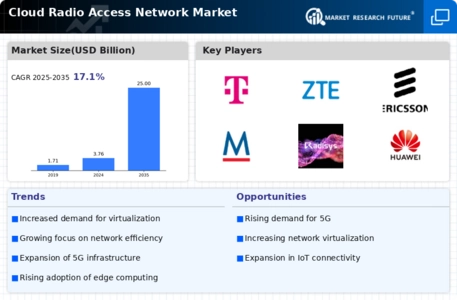
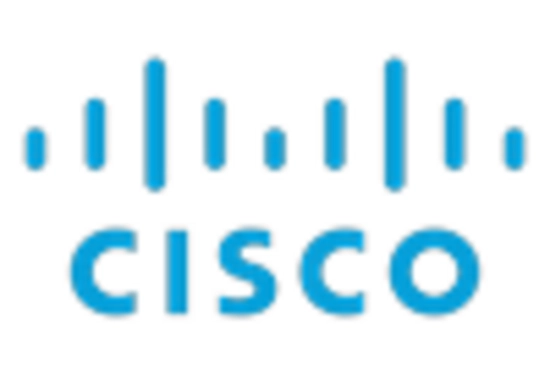
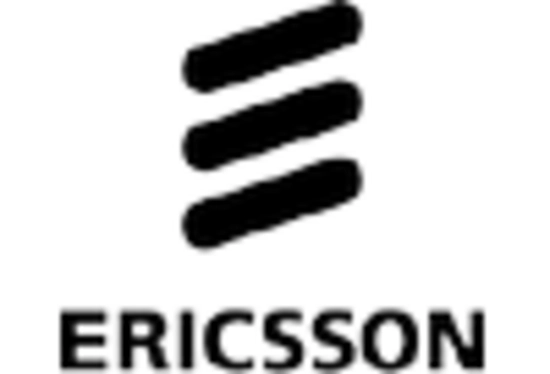
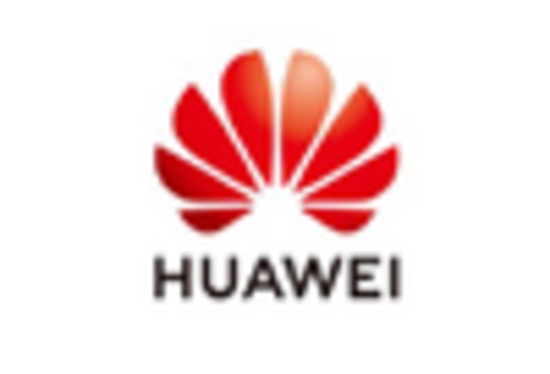

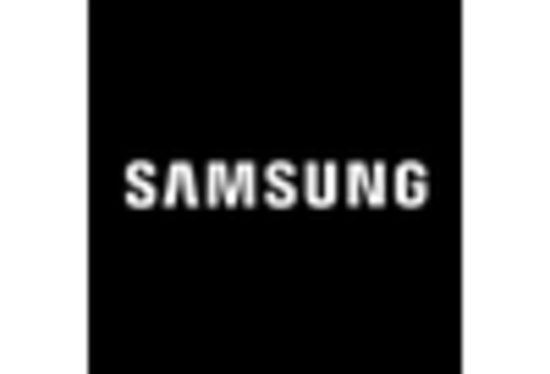
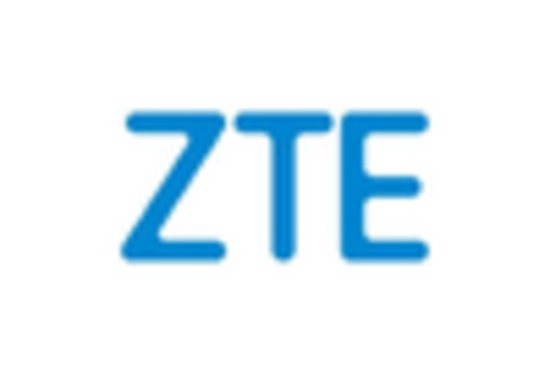

Leave a Comment